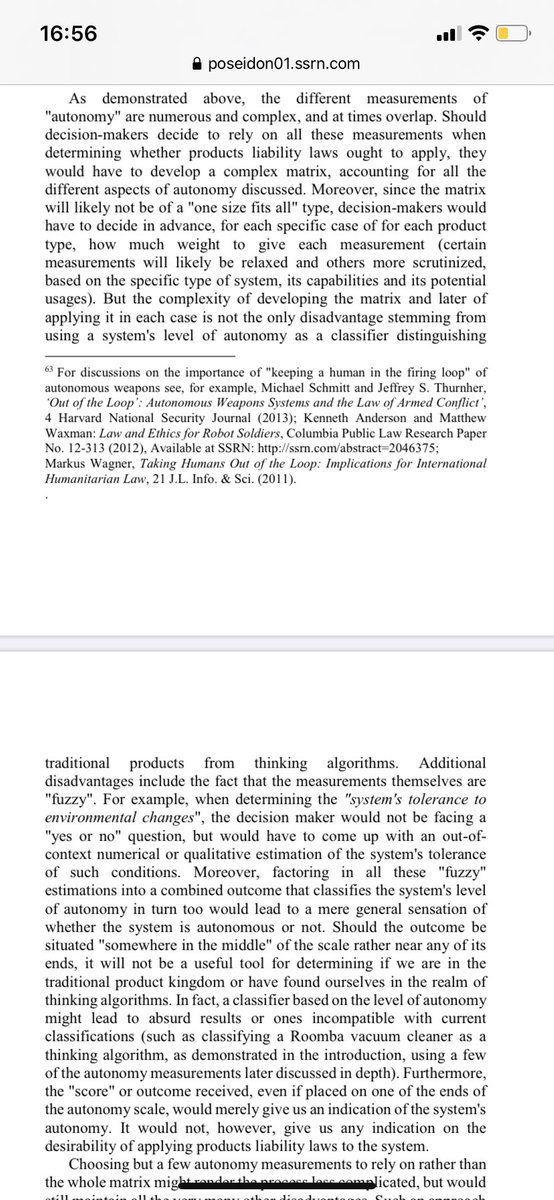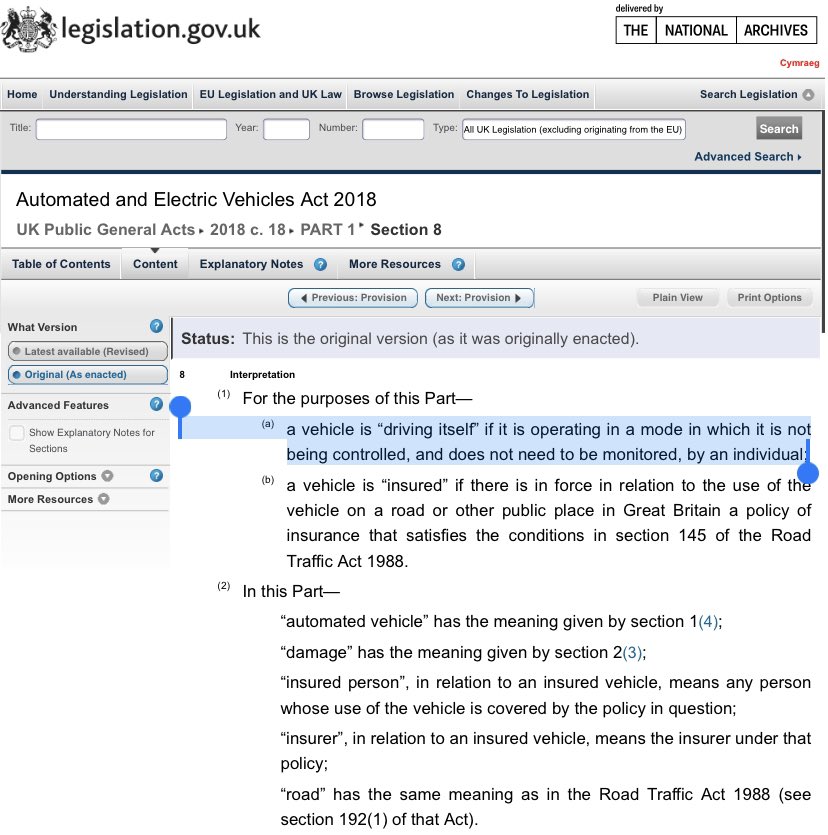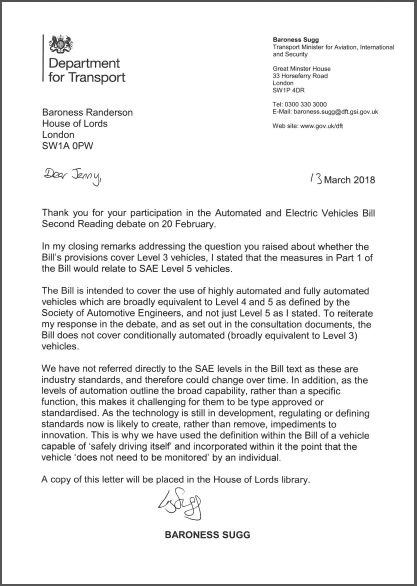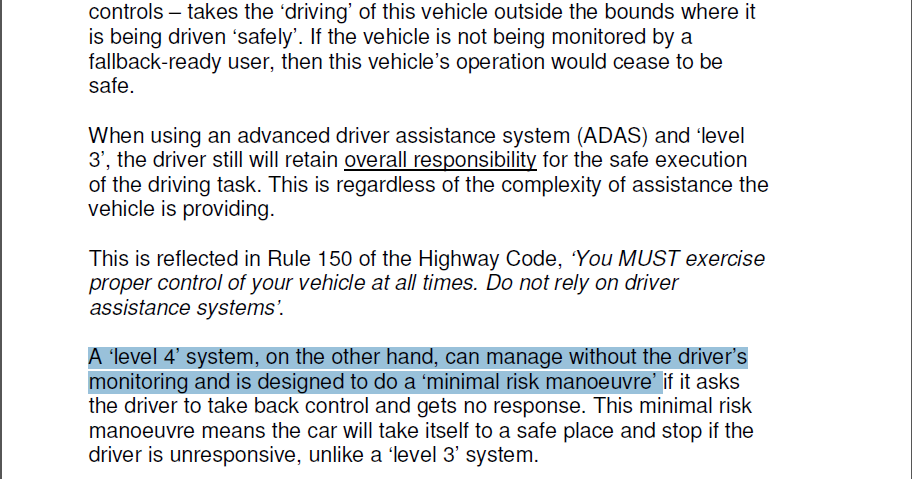This is great piece of analysis on the spectrum of autonomy by Karni A. Chagal-Feferkorn and shows why the SAE levels are so problematic.
It shows why the drafters of the Automated and Electric Vehicles Act 2018 were right to avoid a definition of automated vehicles based on the SAE Levels.
Under s 8 of the Act, a “vehicle is “driving itself” if it is operating in a mode in which it is not being controlled, and does not need to be monitored, by an individual...”
It allows a far more flexible definition of what an automated vehicle actually *is*. But! The greater the flexibility in its definition, the more room there is for disagreement. As such, s 1 may well prove more contentious than many previously anticipated.
Surprisingly, very little has been written about s 1. However, there seem to be a number of areas where disputes could arise.
Critically, s 1(1) makes clear that an automated vehicle driving itself safely is... well, whatever the Secretary of State says it is. And the factors informing their opinion are, per s 1(2)(c), essentially unlimited. So the Sec of State has an *extremely* wide discretion here.
Conventional wisdom has it that the Act applies to highly and fully automated vehicles (i.e. ~ SAE Levels 4 and 5). This is largely informed by the & #39;will write& #39; letters from Ministers during the passage of the Bill through Parliament.
However, as @AlexGlassbrook notes, it& #39;s not yet settled whether the Act will only apply to Levels 4 & 5 (subject to Regs/SoS). Similarly, as @matthewchannon_ points out, the phrase "...in some circumstances or situations..." indicates functionality will be context/ODD-specific.

 Read on Twitter
Read on Twitter







